Stables are the houses where horses live or kept. The other name of the horse stable is a barn. As a horse owner, while you own a horse, you must plan for a stable. There are many breeds of horses that like an open place rather than staying inside barns. Building a comfortable horse stable requires well planning, good locations, a well-ventilated area, easily accessible to pasture, close to exercise place, and secured from adverse climatic conditions.
Many a time, horse owners find discrete information about the horse stable. The types of stable, height, width, floor, doors, window, wiring, lighting, ceilings, and associated facilities should be planned very meticulously. In my article, I shall try to cover almost all points regarding an ideal stable for your lovely horses.
1. Why Horses Need a Stable?
You can think that your horse can stay comfortably in the paddock or pasture 24/7. The stable protects your horse from extreme weather like hot sun, intense cold, thunderstorm, and flood. The horse will feel secure in the stable. It will provide adequate light, ventilation, space for exercise, dust-free environment, drainage facilities, feeding trough, water bucket, and excellent care. The horse also has a personality like a human being. The stable will enhance the nature of horses. Horses can be easily controlled within the stable. You can buy horse stable from reliable online sources like Amazon.
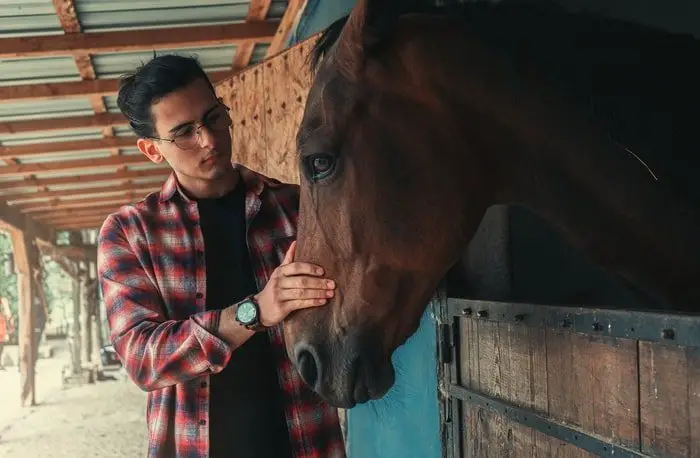
2. History of Horse Stable
Horse stables are one of the oldest houses on the farm. The history of equine stable revealed that stable was first found in Ancient Egypt during the period of Ramses II. In the 16th century, horses were built near the house as the animals were valued. In the Nineteenth century, equine stables were prepared with facilities of feeding, watering, exercise ally, and other associated facilities.
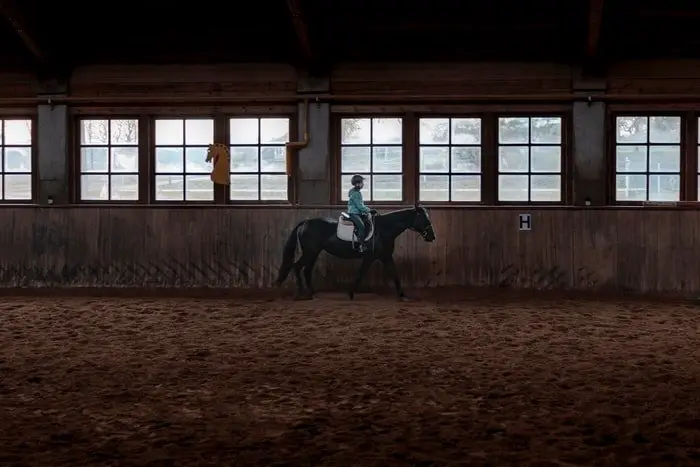
3. Types of Horse Sable
The types and design of stables vary on the types of horses, breeds, availability of materials, climatic condition, purpose, and cost. There are mainly two types of stable loose boxes stable and standing tie stable. There is another type of stable that is the American barn system. The loose boxes style has some free space for walk and rest, feeding and watering trough, and horse care can be taken. In standing tie, stables are confined places where horses are kept for a lesser time. American barns are the wooden made houses where every facility is accumulated like a tack room, stabling, storage for feed and hay, grooming facility, and a central allay.
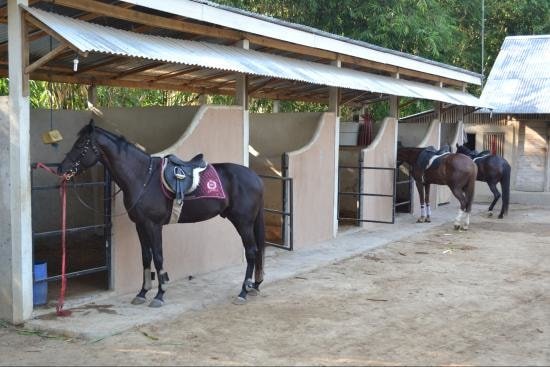
4. What is the Ideal Size for a Horse Stable?
The size of stable varies with the types of stable, breeds of horses, location, and purpose. The loose boxes type stables normally 3.5X3.5 meter, and standing tie stable should have 1.5X2.4 meter. Normally, horses over 1000 pounds need 12X12 feet, medium horses (15H) can be accommodated with 12X10 or even 10X10 feet, pony, or miniature horses need 8X10 feet or even smaller space.
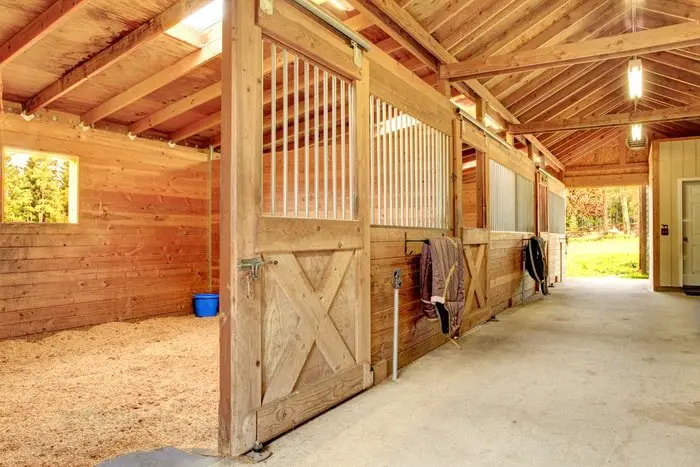
5. Height of Ideal Equine Stable
The height of the horse stable should be as such that a horse can stand freely within it. The average height of the stables is 3 meters from the floor or 1.5 meters from the wall. The stable should have enough space for ventilation, ceiling, lighting, and wiring facilities below the roof.
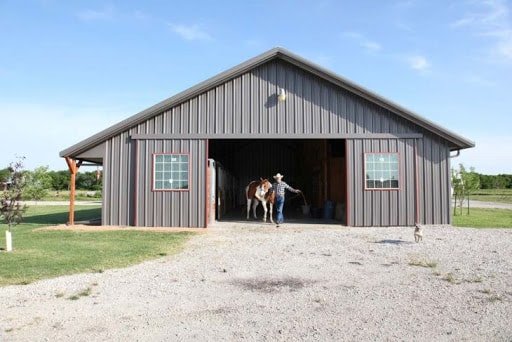
6. Width of Walkway of Horse Stable
The horse barn has several boxes or rooms. The boxes are in two rows. The horse barns are normally inward-facing. Between the two rows, you must plan to keep a walkway. The width of the walkway is 2.5-3 meters. The necessity of a walkway is to observe horses in the barn, supply feed, and water, remove waste materials from the barn, and bring out horses for exercise.
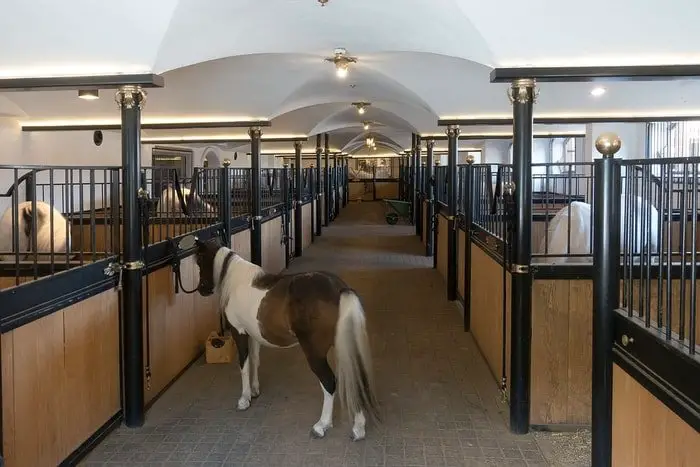
7. Doors of Horse Stable
Horse barn should have a door of a minimum of 4 feet wide. The stable door may be sliding or swinging. The doors should be 3-4 feet height from the floor so that the horses cannot jump over it. The doors should be made of wood, iron bars, or stainless steel pipe. The doors should be smooth, easy opening, secured, and strong enough to protect horses from unwanted entry or exit.
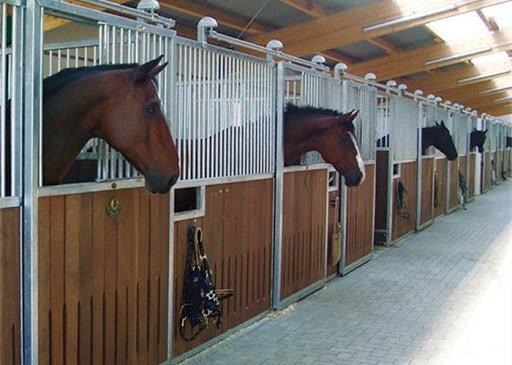
8. Floors of Horse Stable
The most common types of floor for equine stable is made of concrete or paved. The floor surface normally kept rough to prevent slip. The concrete floor is easy to clean, disinfect, and repair. The only disadvantage is harmful to horse legs if they stay for a longer time. In some places, the earth or sandy floor is used for a horse barn. The disadvantage of the soil floor is difficult to clean. A proper drainage system is necessary with the floor to remove the waste materials like urine and faces.
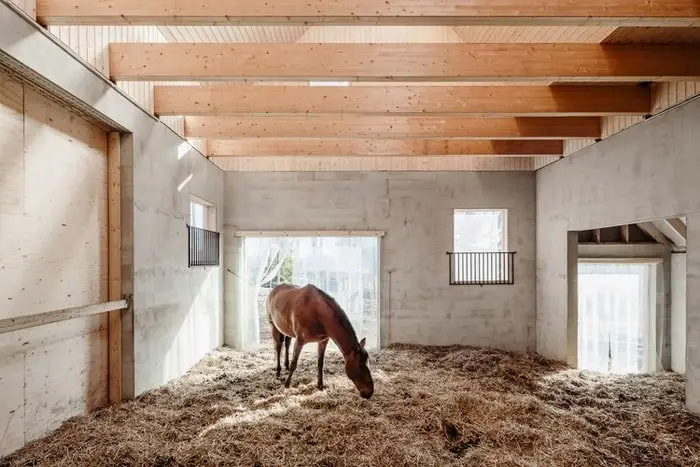
9. The ceiling of Equine Stable
An ideal horse barn has a well-planned ceiling below the roof. The height of the ceiling is a minimum of 8-9 feet from the floor. The ceiling should be placed in height that the wind can easily enter into the barn for proper ventilation. You must look into that; the protruded nails cannot hurt the horse’s head.
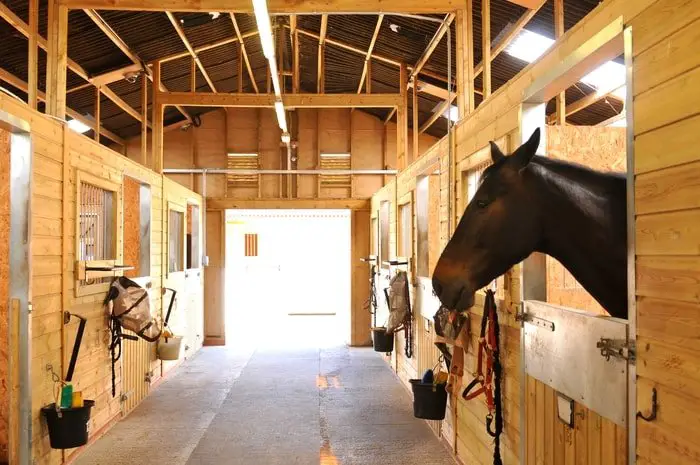
10. Windows in Horse Barn
Windows will provide ways for natural lights and air in the barn. You must plan as much as you can windows while setting stables. The windows must be covered, secured, and parallel to another side so that air can pass easily. Windows should have the facilities to shut down during adverse weather condition so that dust or rainwater can not enter into the horse boxes.
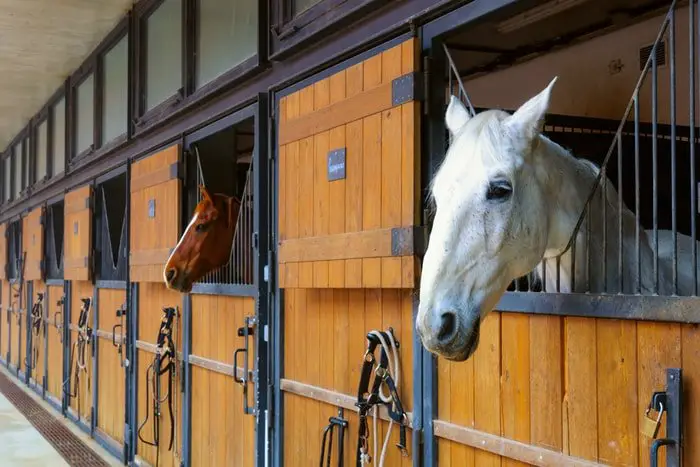
11. Wiring of Horse Stable
Lighting and wiring of the equine stable should be set properly to reduce the darkness. You must set lights so that no dark appears in the stable. The wiring should be in a proper way so that no accident occurs from a loose connection. Lights should be hand above the reach of the horse’s head and properly secured.
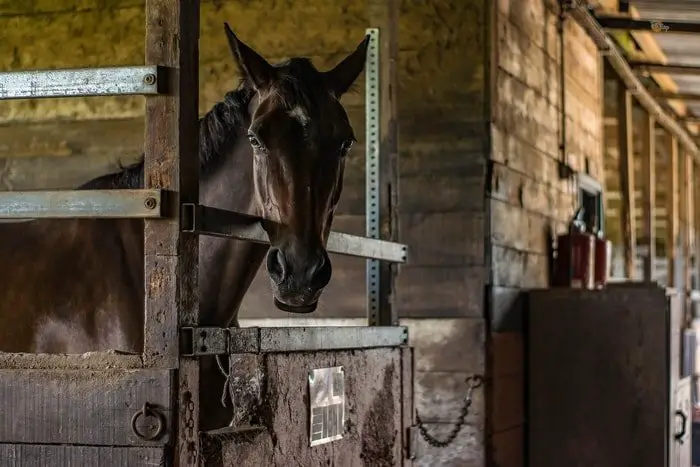
12. Feeding and Watering Equipment
Horses need to concentrate feed, green grass, and water at regular intervals of the day. You must set feeding and watering trough inside the stable. Feed and water trough or bucket should be separate. They should be as deep as the horse can easily enter its mouth. Feeding and watering equipment may be prepared from wood, concrete, or rubber bucket. They must be clean daily with clean water and a mild antiseptic solution to prevent bacterial contamination.
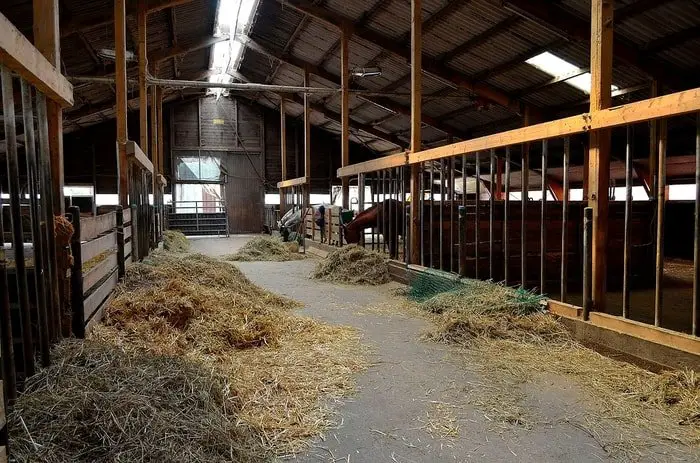
13. Other Facilities Equine Stable
An ideal horse barn should have some associate facilities available within it like feed store, store for horse tack, Ferrier workshop, a place for a haystack, first aid kits, and a small dispensary. A weel planned drainage system should be kept to drain out the faces, urine, and other waste materials. There should be an adequate place for the movement of horses; otherwise, stable vices will be developed.
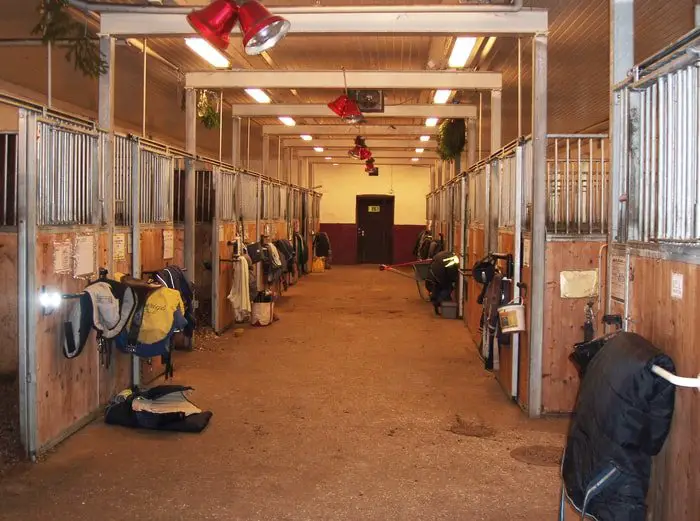
14. Uses of Equine Stable
Horse barn or stable is the primary build for the horses. The other uses of stable are Extention for the vets, Ferrier, trainer, and caregiver. Stable has a storehouse of feeds, grains, tack, medicine, and hay. Some stables provide facilities for horse exercise and training.
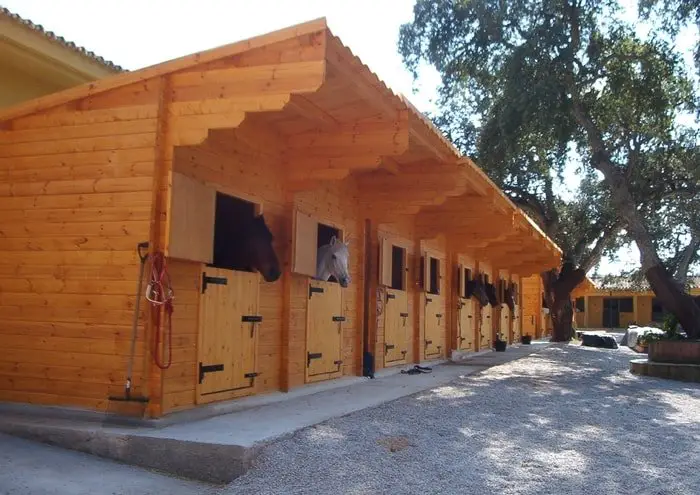
15. Costing of Horse Stables
The above information or important tips I have discussed for a comfortable stable must be cost-effective. The costing of horse barn depends on the materials used, design, size, facilities, and types of horses. As a horse owner, you must select your stable design as per your capabilities and requirement.
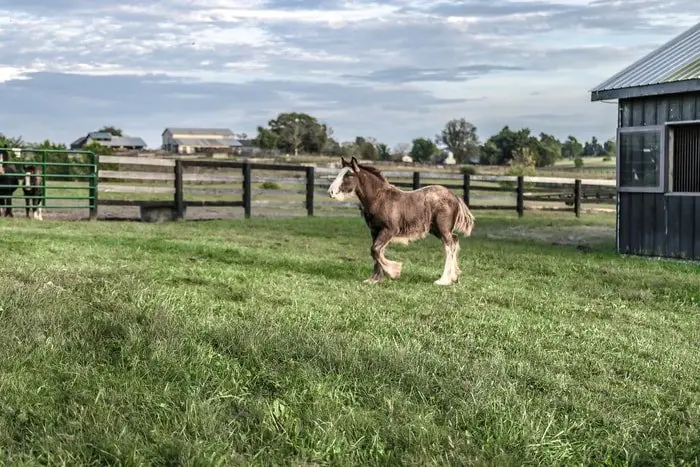
Concluding Remarks on Equine Stable
The horse stables are the oldest house in the history of the farm. The horse barn is the traditions and cultural heritage of many countries. Horses are more secured, comfortable, well-managed, and healthy withing the stable. The cost of equine stable must be considered during its construction. The above information will help you a lot to set up an ideal stable for your lovely horse.